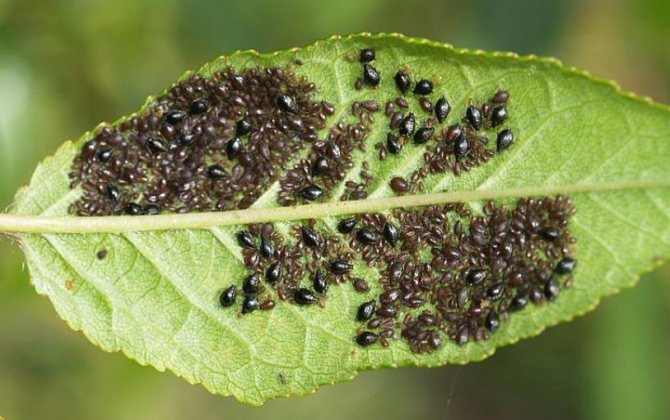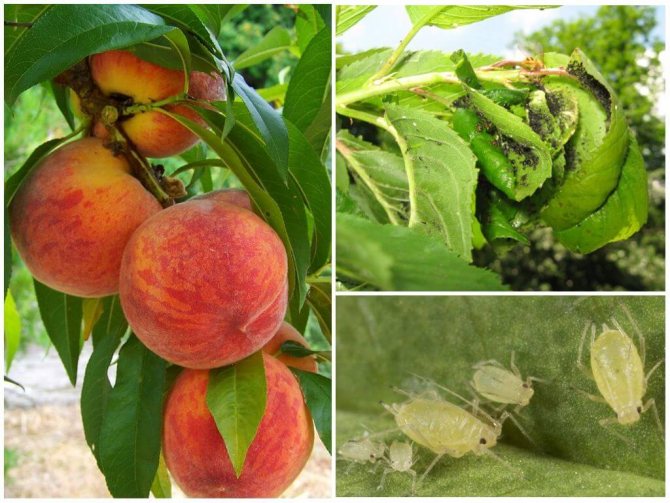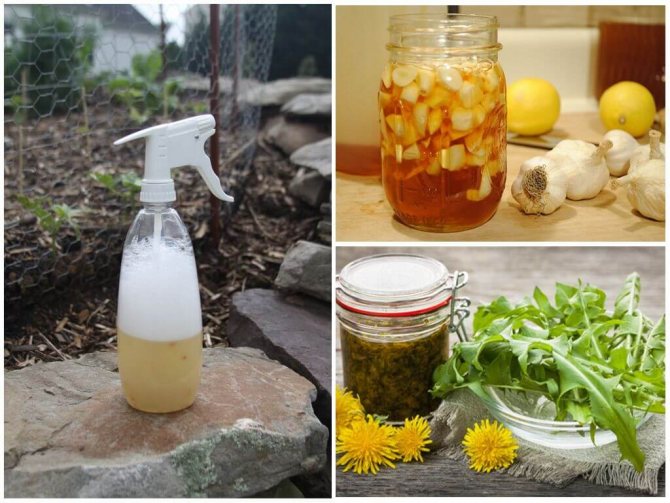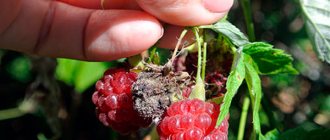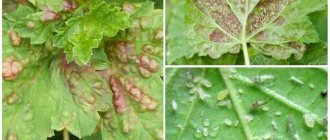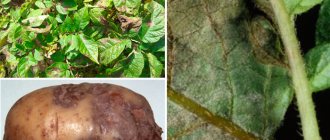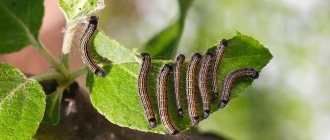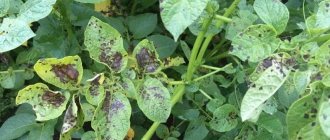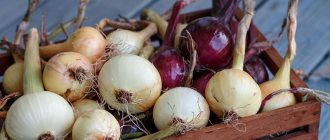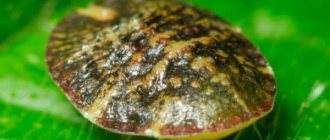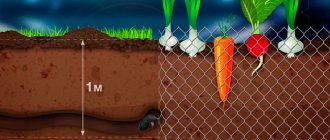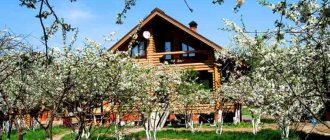Like other crops, peaches are often attacked by pests. The peach aphid is considered the most dangerous and common problem. Beetles on a peach appear with the onset of heat, in May, and do not leave the plant until the end of the growing season.
Despite its small size, the insect brings irreparable harm: it spoils the flowering of buds, destroys the young shoot and foliage, and harms the fruit ovary. As a result, even in a fertile year, you should not expect a harvest. Further on how to deal with aphids on a peach, effective preparations and folk methods used by experienced gardeners.
Causes and signs of appearance
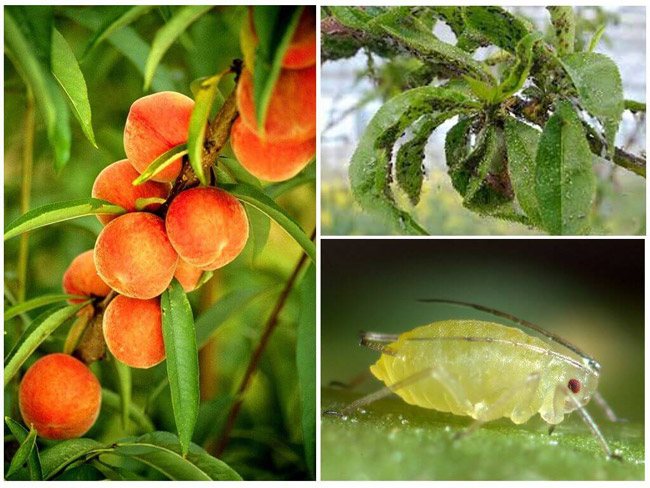
Have questions? Ask and get useful advice from professional gardeners and experienced summer residents. Ask a question >>
Aphids are a pest that is difficult to detect at the time of initial infection. Usually, gardeners grab their heads when the aphids become so numerous that the crown of the tree dies before our eyes.
Especially dangerous for the peach is the blood aphid, which not only infects the leaves, but also sucks the sap from the branches of the tree and its trunk. Such aphids are perfectly visible. Most often, it appears in the fall after a hot summer. The leaves turn red, then curl up into tubes, wrinkle and fall off.
In the photos and videos that gardeners post on the Internet, the colonies of such aphids and the consequences of its reproduction are perfectly visible.
Black and green aphids settle on peaches in early spring, by the summer they multiply and move to other crops. How to understand that this pest has settled on a tree? It is recommended to carefully examine all young shoots of the plant, as well as its stem. The following symptoms indicate aphid infection of a peach:
- The leaves of the tree begin to turn yellow, curl into tubes and fall off.
- The plant becomes sticky and shiny. The aphid secretes a secret called padya and leaves it on the leaves and buds.
- The leaf tubes are filled with green and gray translucent insects inside.
The consequences of an aphid attack on a tree are tragic. The peach gets sick, its immunity decreases, it does not tolerate frost well, there may be no fruit at all or the harvest will be small. Therefore, aphids must be fought. And you should start doing this without waiting for big defeats.
How to deal with aphids on peach with folk and store remedies
The peach aphid is the most common crop pest. The insect infects a tree in early May, pests throughout the growing season. The damage is colossal - the buds do not bloom, the fruits fall off, the young shoots die off, the leaves curl, turn yellow. Experienced gardeners tell how to deal with aphids on peaches.
Signs of pests
Peach aphid is a small insect with a body length of no more than 3 mm. The most common species is the large peach, green, black bloody aphid. Pests form entire colonies, giving up to 20 generations for the entire warm season. By the end of summer, winged individuals appear - males and females, capable of migrating to other cultures. A photo of the pests is presented below.
Which processing method to choose
There are three ways to destroy a harmful insect:
- chemical;
- biological;
- using folk methods.
Most gardeners, having found colonies of pests on peach trees, grab onto store-bought chemicals. However, their more experienced colleagues advise starting the fight against aphids with gentle measures. These include biological and mechanical. What does it mean?
- First, near the tree, you need to remove all fallen leaves and weeds.
- Remove, by cleaning, the old bark on the trunk and branches.
- Rinse all pests off the peach with water from a garden hose.
- The foliage that is severely affected, remove by cutting from the branches, collect, take out of the summer cottage and burn.
As a preventive measure, around peach trees, you can plant herbs that aphids cannot stand: lavender, marigolds, chamomile, dill, mint and yarrow.
Another remedy is to fight the pest with the help of its natural enemies. For example, aphids are loved by birds (sparrows, titmice, beetles, linnet) and beneficial insects such as flower girls, lacewings and ladybugs.
You can feed the birds so that they regularly fly to the plantings, and lure insects with specially planted plants. Experienced gardeners try to bring ladybirds to the site and leave them on healthy or already affected trees.
After harvesting, that is, in the fall, the land around the peach should be treated with ash. If such methods were not very effective, you need to turn to other methods.
Aphids on a peach: control measures
Every gardener wants to see his garden healthy and fruitful. But often insect pests affect fruit crops. Aphids on peaches are a common pest that quickly spreads to neighboring fruit crops without timely treatment.
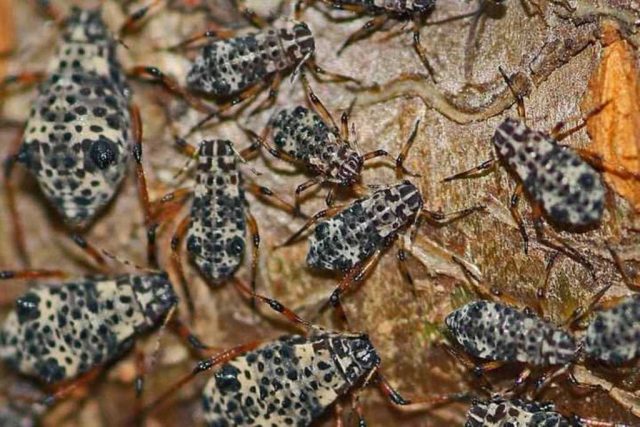

Why is the peach aphid dangerous?
Aphids are small insects that live in families. Aphids on a peach can be of several types:
Before starting the fight against a pest, you need to know what the insect looks like and what are the first signs of the disease.
The large peach aphid is a common pest that mainly affects the peach. The peak of the disease occurs in July-August. At this time, insects form numerous colonies that can be seen with the naked eye. Insects are located on the inner side of the leaf plate, secrete sugary excrement, which, flowing down to the soil, attracts wasps and ants. Without treatment, the large peach aphid can produce 8 to 10 generations. Eggs laid in autumn overwinter in the bark of stem branches.
The green aphid is the main distributor of viruses Y, A, L, M and S. The insect inflicts the greatest harm on young seedlings, sucking out the sap, which leads to the drying out and death of the plant. Damaged shoots freeze out in the cold, fungal diseases settle on the secretions, weakened peaches are attacked by carpenter beetles.


The blood aphid on a peach is a dangerous insect that sucks the sap from the tree. The pest can be recognized by the mass accumulation on the inside of the leaf. Aphids have a dense fluff; when crushed, they release a red liquid, similar to blood. If the timely destruction of the bloody aphid is not carried out, then the peach is deformed, ulcers appear on the shoots, and fruiting decreases.
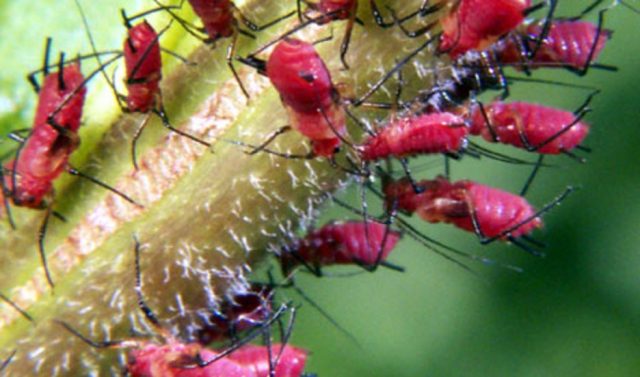

Black aphids settle on the inside of the leaf plate. It can often be seen on young, weakened seedlings. With mass distribution, a sticky liquid appears on the buds and flowers of the peach, which is secreted by the insect. The top of the shoot and foliage curl, the buds do not open, the fruiting decreases. Black aphids provoke the development of a sooty fungus and powdery mildew.
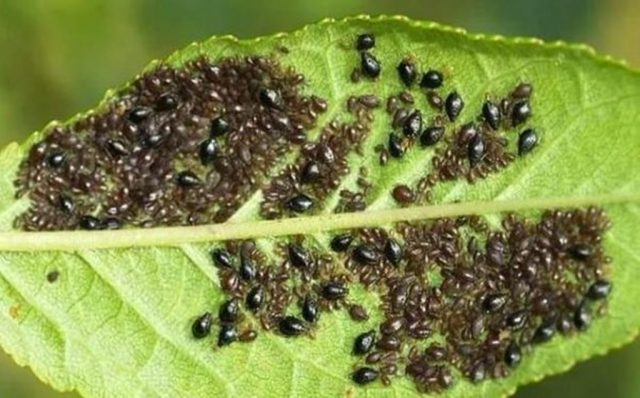

Green aphids cause great damage to a young, weakened seedling. When infected, twisting and lightening of the leaves at the top of the shoots occurs, the tree begins to throw off the peduncles and the formed buds.
The large peach aphid sucks out all the nutrients from the bark and shoots, resulting in redness, curling and premature leaf fall.
Black aphid hibernates in peach bark and attacks young foliage and buds with the arrival of warm days. Since the black aphid colony consists mainly of a female, it is very difficult to get rid of it due to the regular appearance of offspring.
To recognize the peach aphid, you need to view the photos of the infected trees:
Signs of aphids on peaches
Before starting treatment, it is necessary to identify the pest. Aphids on a peach can be recognized by the following:
- the insect colony accumulates on the inside of the leaf;
- buds, leaves and flowers are covered with a mucous liquid;
- the process of dying off the top of the shoot begins;
- pests feed on plant sap, which leads to curling, drying and death of foliage;
- the plant stops growing and developing;
- fruiting decreases or does not occur at all.
Peach aphid control measures
To protect the peach tree from aphids, it must be processed several times per season:
- the first treatment is carried out before swelling of the kidneys;
- repeated - during the appearance of foliage;
- further - during flowering.
It is necessary to get rid of aphids on peaches at the initial stage of the disease, so as not to give pests a chance to multiply. There are several ways to get rid of peach aphids: mechanical, chemical and folk remedies.
The chemical method must be applied very carefully so as not to destroy the young tree together with insects. In the summer, during the formation and filling of fruits, it is better to use mechanical and folk methods of treatment.
Agrotechnical methods of controlling aphids on peach
When a black aphid appears on a tree trunk, you do not need to immediately apply chemicals. As this can harm the plant and cause damage to the crop.
Experienced gardeners recommend using one of the mechanical methods of dealing with a pest insect:
- Washing off aphids with water. Initially, the near-trunk circle is cleaned of weeds, the trunk and trunk branches are cleaned. Further, a powerful stream of water is directed to the crown of the tree, thereby washing away numerous insects.
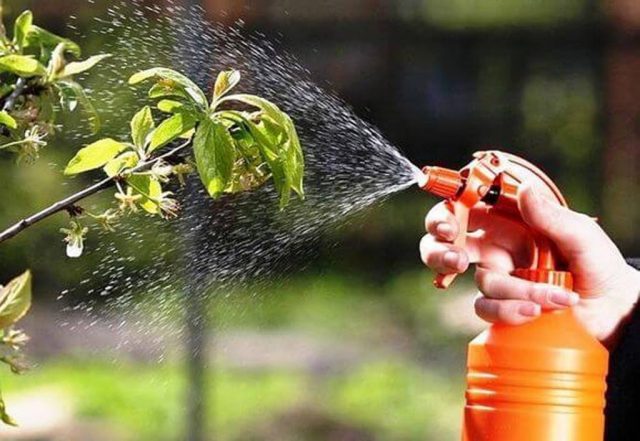

- Planting fragrant plants in the near-stem circle. Peach aphids do not tolerate strong odors. Fragrant herbs will not only get rid of insect pests, but also become an excellent prevention of many diseases. Mint, calendula and marigolds can be planted around the peach tree. The planted dill will attract ladybirds, who will happily exterminate the tree from aphids and other insects.
- In case of mass infection, it is necessary to remove and burn the affected leaves in a timely manner.
- You can protect the tree from insects with a resinous belt.
- A month before the onset of frost, the trunk circle is sprinkled with wood ash and spilled with hot water. Dissolved ash, penetrating to the root system, oxidizes and repels peach aphids. Also, hot water destroys insects that winter in the soil and in the bark of the tree.
If the mechanical method does not give the expected result, you can use the chemical method. But it must be remembered that chemical preparations cannot be used during the fruiting period.
How to deal with aphids on peaches with chemicals
Chemicals can be used in the spring before bud break, during flowering and one month before harvest. Insecticides are used to combat. The chemical, penetrating the peach tissue, paralyzes the pests, after which they die en masse.
Chemicals
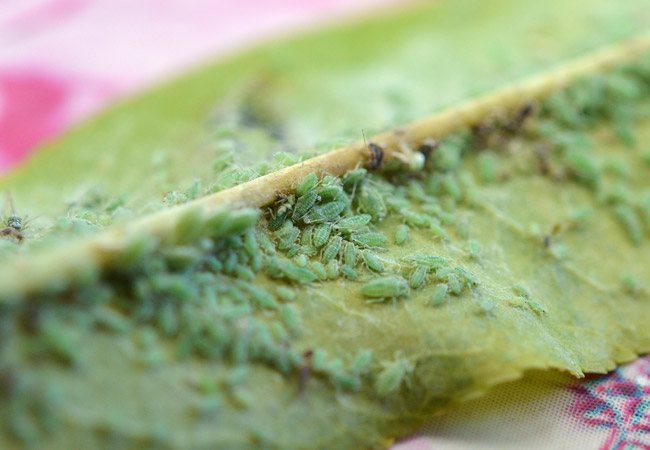

When biological and mechanical methods do not help, the time comes for radical measures, that is, you need to start treating trees with chemicals.
It is important to take into account that they will remain on plants for a long time, usually within twenty days, therefore, it is absolutely impossible to process a peach during fruiting, when it is time to harvest.
It is necessary to spray peach plantings in the spring, while there are no leaves, or during the period when the first ovaries appear. Among the effective means, experienced gardeners distinguish the following:
- Aktara;
- DNOC;
- Confidor;
- Karbofos.
A set of preventive measures
To protect the tree and the crop from the attack of aphids, it is necessary to carry out prevention in a timely manner:
- In autumn, clear the trunk circle of foliage, weeds and plant debris.
- Dig up the earth carefully.
- In the spring, before sap flow and in the fall after leaf fall, treat the tree with Bordeaux liquid.
- A month before the onset of frost, whitewash the trunk. Before whitewashing, clean the trunk of lichen and moss with a wire brush or a wooden scraper. Treat the damaged bark with iron vitriol and cover with garden pitch.
- Perform sanitary pruning in a timely manner.
Traditional methods


Here are just a few:
- Dandelion infusion. We collect leaves and roots of this plant. If only the leaves, then we need 400 grams, with roots - 200. Fill with warm water (10 liters), insist for 2 hours, filter. This product should be sprayed on the entire peach tree.
- Garlic infusion. Grind the garlic (about 300 grams), dilute in ten liters of water, leave for 20 minutes, filter and immediately spray the tree.
- Onion peel. We make an infusion out of it. We insist 150 grams of husk for five days in ten liters of water, then strain it, add 50 grams of liquid soap to the solution and sprinkle on the trunk and leaves of the peach.
- A decoction of tomato tops. You will need 2 kilograms of tops, which must be soaked in 10 liters of water for thirty minutes, and then boil it all for the same time. For spraying, we take two liters of broth, dilute it in a bucket of water with the addition of 40 grams of liquid soap.
- A mixture of cinnamon, hot pepper, mustard, salt, soda, ash. We take equal parts of each spice, fill it with warm water, add soap and stir in 9 liters of water. Such a solution is prepared before each treatment of peach trees. And you will need to make two of them. The second - a week after the first.
- Infusion of tobacco. Tobacco powder (250 g) is infused in 10 liters of water for three days. Add soap to the solution before processing.
Prevention
In the spring, the larvae that overwintered in the soil and on the bark of trees will get out of their shelters and, having gotten stronger, will begin to multiply rapidly. Therefore, even before the buds swell on the peach, you need to attend to a comprehensive pest control. The main thing is not to allow aphids to have time to multiply and destroy the plantings when there are no massive colonies yet. It is recommended to spray the peach with fungicides during bud break, as well as after flowering. When treating a garden with pesticides, it is strongly recommended not to rush, but to conduct a test. Young trees are susceptible to drug components and may die. In order not to destroy the plant, on the first day, one or two branches are treated by spraying the drug on them, and after a day they look to see if there are any changes. If all is well, then all the peaches can be processed.
It is easier not to solve any problem, but to prevent its occurrence. To prevent aphids from hitting peaches, prevention is needed:
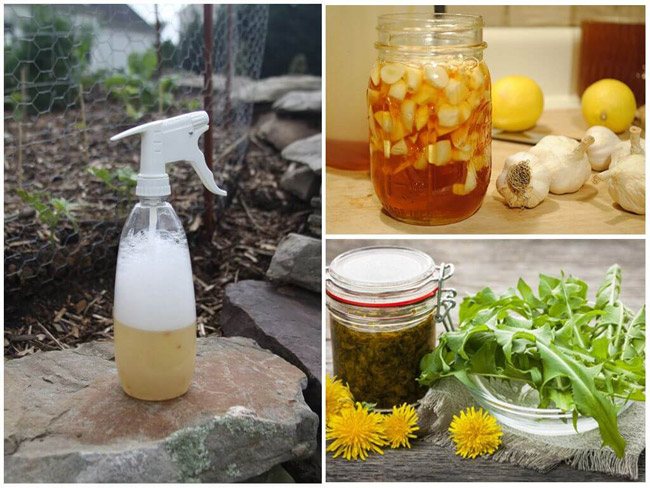

- We regularly check the garden for the presence of ants. They breed aphids and carefully protect them. Anthills should be destroyed or moved to the forest.
- After winter, trees need to be whitewashed using lime.
- Found dry and diseased branches must be cut down.
- Plant repellent plants (lavender, mint, garlic) and flowers that attract beneficial insects at the trunk.
- Spray peaches in preventive measures with infusions made from herbs and flowers.
- Bring beneficial insects (ladybirds, lacewings) to the site.
If you carry out prevention and monitor the site, you can protect the trees and plants of the entire garden from harmful insects.
How to process a peach, if there is aphid on it, how to deal with folk remedies and drugs
Aphids are an insidious pest that affects fruit orchards. Colonies of insects are capable of killing plants in a matter of days. If aphids appear on a peach, you urgently need to save the tree, for this you need to know how to process it. There are many popular ways to get rid of parasites, but if aphids are discovered too late, then you cannot do without the use of pesticides.
Characteristics
Aphids - small insects, no more than 3 millimeters long, attack plants in unison, forming colonies. There are several types of aphids on peach trees:
The most dangerous species is the blood aphid. Insects not only eat the leaves, buds and flowers of plants, but also suck nutritious juices from tree trunks. The plant loses strength and energy, the future harvest is in jeopardy.
The large peach aphid, like other species, begins its distribution from the inside of the leaves, then spreads to the branches and trunk of peach crops. In the presence of a large number of colonies, the crown of the tree begins to dry out and wither, the top of the plant may die off.
How to determine the appearance of a parasite
It is necessary to identify parasites in a timely manner. To do this, you need to regularly inspect the plants. Aphids can be identified by the following features:
- black dots on the inside of the leaves;
- sticky layer on peach buds and flowers;
- the presence of dried, twisted leaves, small spots may appear;
- insect colonies are visible to the naked eye;
- the blood aphid lives on the trunk and stems, sucking the sap of the tree;
- the crown begins to wither, the plant stops growing.
On a note! A peach affected by aphids loses its immunity, weakens, the frost resistance of the plant is noticeably reduced.
Peach Insect Control Methods
You need to start fighting small pests as early as possible. Aphids on peaches spread quickly, there are proven methods of insect control: agrotechnical measures, insecticides, folk remedies and recipes.
Agrotechnical method
It is recommended to start fighting the pest using a number of agrotechnical techniques:
- Often, aphids move to peach plantations from other plants. Removing weeds growing next to the peach eliminates the interaction of infected plants with the peach.
- Planting green manure: spicy and fragrant herbs scare away aphids from trees. Dill and mint are enemies for insidious parasites.
- Removal of old bark and mechanical cleaning of the trunks from insects.
- Use a jet of water to clear the peach foliage of parasite colonies.
All affected foliage and removed diseased branches are burned. The tree is sprinkled with wood ash at the root. Whitening of trunks with lime is a proven method of protecting plants from aphids.
These techniques are effective at the initial stage of the disease and are a good prophylaxis against plant infection by aphids.
Chemicals
The use of pesticides is extreme measures, but if the plant is completely affected by aphids, you cannot do without them. It is possible to carry out treatment with insecticides against aphids in three stages:
- in early spring - during the period of kidney recruitment;
- before flowering;
- after harvest.
It is dangerous to process peach crops with chemicals during the fruiting period - the yield decreases its quality, the fruits are not recommended to be used for food within 20 days after processing.
Chemicals enter the diet of insects along with the sap of the tree. Aphids paralyze, within two to three days the colonies die out.
Modern chemical plant protection products are varied, their choice depends on the period when the plant needs help and the type of aphid that attacked the plants. During the flowering period, you can use Confidor. Phosphamide will quickly kill black and white aphids. DNOC will relieve larvae and overwintered aphids. The dosage of drugs is determined according to the instructions.
Important! Before harvesting, it is forbidden to process trees from aphids.
Pesticides must be alternated. Aphids quickly develop immunity to drugs, the funds become ineffective.
Traditional methods and recipes
The use of folk remedies is justified, they do not affect the quality of the crop, the poison does not penetrate into the juices of fruit trees. You can apply folk recipes at any period of plant development.
An arsenal of folk ways to combat aphids includes:
- Garlic and onion skins. 800 grams of onion husks are insisted in 10 liters of water during the day and 10 chopped heads of garlic are added. The solution is filtered and fruit plants are sprayed with a spray bottle. The effect of the folk remedy can be enhanced by adding half a piece of laundry soap to the solution.
- A mixture of red pepper, mustard and wood ash. For 10 liters of water, add 1 glass of each component, and then spray the plants.
- Infusion of tobacco powder based on laundry soap. In 10 liters of water, dissolve one standard bar of soap and add 250 grams of tobacco powder. After three days, the product is ready.
In the struggle of gardeners with aphids on peaches, many ways of destroying small pests were born: Coca-Cola, ammonia, vinegar and boric acid - all the means successfully proved themselves in the fight with aphids. How to spray or process a peach from an insidious aphid, the gardener decides on his own. It is recommended that you try several methods to find the most effective one.
How can insects be prevented?
Prevention is the best way to control aphids. To prevent the appearance of parasites on peach trees, a number of measures are carried out:
- spring and autumn whitening of trunks with lime;
- sanitary pruning of old leaves and stems;
- digging in peach trees in a circle and sprinkling the dug-up surface with wood ash;
- planting fragrant herbs next to peaches;
- treatment with Bordeaux fluid during the period of kidney recruitment;
- elimination of anthills from the personal plot. These insects breed aphids and carefully protect them;
- ladybugs feed on aphid larvae, the presence of these insects on peach trees is an effective way to control pests.
You can save peaches from aphids with the help of comprehensive preventive measures and regular inspection of trees for the presence of pests.
Healthy peach trees are a gardener's dream. If the plants are attacked by aphids, this is not a disaster. A disease detected in time is always treated, many methods of pest control have been invented: from folk remedies to chemicals. The main thing is to take preventive measures in a timely manner.

